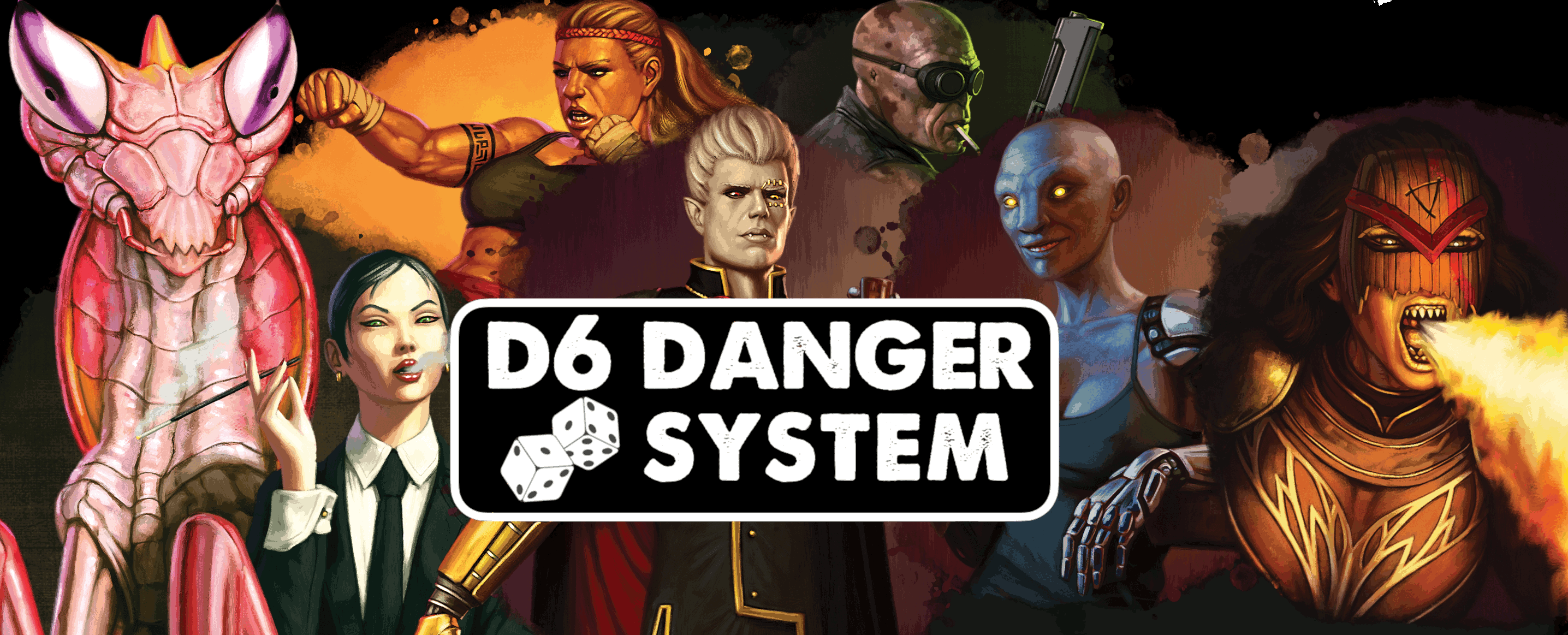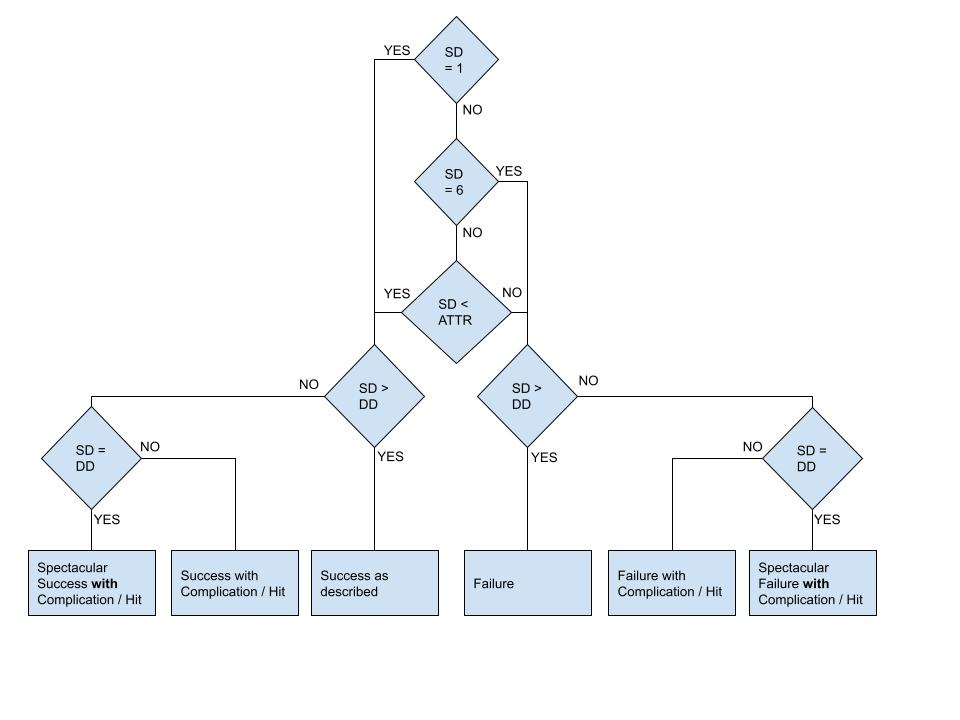Example of Play and Attribute Clarification
I have added a pdf with a short example of play to the downloadable files. I also want to help clarify a bit about how we use each of the attributes for rolls. Here are the texts around rolling dice and attributes from the book.
“If a Character is doing something difficult, special, extra cool, or while under pressure, or in immediate danger, then the GM will tell you to Roll Dice and tell you which of the Character's Attributes to check the roll against.”
and
“The Attributes are a numerical measure of important aspects of a Character. Each Character has the following three Attributes.
Wit: smarts, cleverness, knowledge, fast talking
Grit: strength, stamina, speed, attitude, ability to take a hit and dish one back
Screw It: luck, chance, wild abandon, charging ahead recklessly”
The Wits attribute is made to cover all of the mental acumen of a character, from book knowledge and training, to thinking quickly on their feet and fast talking. Examples would be hacking in to a computer, decoding an in game cypher, talking a guard out of calling for help, and recalling important information about a subject.
The Grit attribute is your ability to do violence and take it, as well as a measure of your general health, physical endurance, and fortitude. Brawling and fighting, jumping over a large chasm, running through fire, and standing up to intimidation are all examples of things that fall under Grit.
Screw It is the wild card attribute. Think of it as a mix of luck and recklessness. This is Han Solo shooting the lock to open or close the door, or running down the hall into the smoke just blasting and somehow it all works out. It can also be used to attempt actions that a character isn’t trained in, but would have some chance at pulling off.
Hopefully this, along with the example of play, help clarify how to use the attributes during play. Remember, D6 Danger System is designed as a rules-light game to keep the players in the action. When in doubt, choose what makes sense in the moment, or even let your players make a case for an attribute if they can narrate why it makes sense. Have a great day and happy gaming.
C. J. Koger
Get D6 Danger System
D6 Danger System
A Fast-Paced Narrative Roleplaying System for Any Setting
| Status | Released |
| Category | Physical game |
| Author | C. J. Koger |
| Genre | Action, Adventure, Role Playing |
| Tags | Anime, Casual, Fantasy, Horror, Sci-fi, Short, Tabletop |
More posts
- Updates v1.2Apr 13, 2022
- New Format AvailableMar 11, 2022
- Adventure ModulesMar 01, 2022

Comments
Log in with itch.io to leave a comment.
I'm confused by the final die roll in the example of play - no matter how I look at it within the rules, to me it seems to be a Success with a Complication, not without;
SD = 1, Attribute = 4, DD = 5
Since SD equals 1, it's automatically a Success; and then, because SD is less than DD and not equal to DD, we add a Complication.
Is that correct?
(I had to build a flowchart to get this straight in my head - I hope I built it correctly;
On the fourth line, I used SD > DD instead of DD < SD just to make the logic boxes consistent.)
Thanks.
My apologies, you are correct. I adjusted a couple things in the example of play, and went back through to check for typos in the text, but didn’t recheck the dice roll results again. Also, very impressive flow chart!
Thanks! Creating that flowchart really highlighted for me that there's only 1 result that ends in a Success without any additional complications for the PCs - while all of the other 5 possible results are a source of trouble for the PCs.
I'm looking forward to seeing how this feels during play!